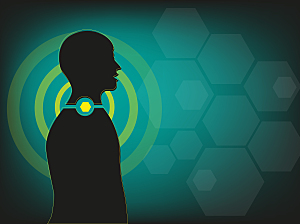Some patients with laryngopharyngeal reflux (LPR) report a substantial impact of their symptoms on quality of life (QoL). Severe symptoms may affect sleep and everyday activities, and can be associated with increased anxiety and depression.
Thomas L. Carroll, MD, director of the Voice Program in the Division of Otolaryngology–Head and Neck Surgery at Brigham and Women’s Hospital, Jérôme R. Lechien MD, PhD, of Université Versailles Saint-Quentin-en-Yvelines, and colleagues have developed the first classification of LPR severity that stratifies patients based on the impact of their symptoms on QoL. Their report appears in The Laryngoscope.
Methods
171 patients with symptoms and signs of LPR were prospectively recruited from three academic medical centers. LPR was diagnosed by hypopharyngeal–esophageal impedance-pH monitoring.
Patients were treated for three to nine months with a special diet and a combination of proton pump inhibitors, alginate, or magaldrate, depending on whether they had acid or nonacid LPR and whether they had gastroesophageal reflux.
Patients were asked to complete the Reflux Symptom Score (RSS), which includes a section for rating impact on QoL, at baseline, six weeks, and three and six months after treatment initiation. The total RSS score ranges from 0 to 625 and the QoL-RSS score ranges from 0 to 98.
At baseline and three and six months, patients also underwent video-laryngostroboscopy and had oral cavity photos taken. Blinded investigators assessed these retrospectively with the Reflux Sign Assessment (RSA).
Three Profiles
140 patients and 82 healthy individuals completed evaluations, and patients were followed for three years after the treatment period. Three profiles of LPR duration were noted:
- Acute LPR did not recur after initial treatment (n=41)
- Recurrent LPR: Patients had one or several episodes of LPR yearly, all successfully treated intermittently by medication or strict diet (n=57)
- Chronic LPR: Symptoms persisted despite treatment, or patients needed long-term medication (n=42)
The International Federation of Otorhinolaryngological Societies (IFOS) developed a classification system of LPR based on those three profiles, baseline RSS and QoL-RSS scores and the evolution of RSS and RSA throughout treatment.
The IFOSCLT
The IFOS Classification of Laryngopharyngeal Reflux Types (IFOSCLT) is as follows:
- No symptomatic LPR: RSS score 0–13 and QoL-RSS score 0–5
- Acute LPR: QoL-RSS score 6–25
- Recurrent LPR: QoL-RSS score of 26–38
- Chronic LPR: QoL-RSS score >38
In receiver operating characteristic curve analysis, QoL-RSS >5 had sensitivity of 94% and specificity of 75%.
The thresholds did not apply to all patients, however. Of the 42 patients with chronic LPR, 11 (23%) had a QoL-RSS score <38. Sixteen patients with recurrent LPR (28%) and four with acute LPR (10%) had a score >38.
The Potential for Precision Medicine
The IFOSCLT gives insight into how an individual patient’s LPR disease may improve or evolve without needing a physical examination or pH/pH–impedance study.
This classification system should be studied further to determine whether it could allow more individualized treatment strategies. For example, patients with a low QoL-RSS, and thus a higher probability of having acute LPR, could start with diet and stress management alone. In contrast, those with suspected chronic LPR would have medications prescribed immediately.
The use of precision medicine could substantially decrease the current cost burden associated with treating LPR.
